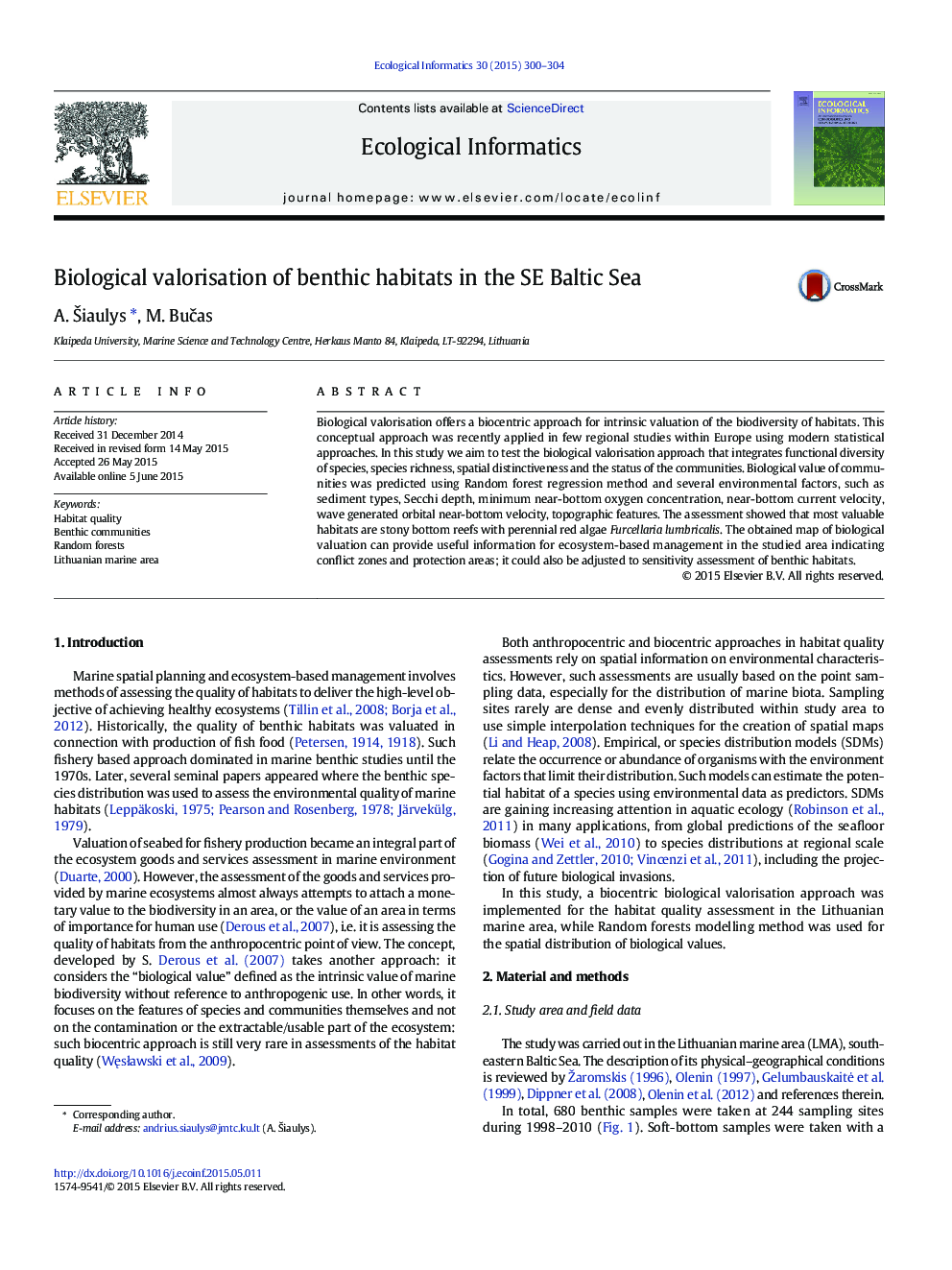| کد مقاله | کد نشریه | سال انتشار | مقاله انگلیسی | نسخه تمام متن |
|---|---|---|---|---|
| 6295753 | 1617204 | 2015 | 5 صفحه PDF | دانلود رایگان |
- The value of benthic communities was estimated based on species richness, functional diversity and spatial distinctness.
- We modelled the value of benthic communities to define the most important seabed areas.
- The most valuable habitats in Lithuanian marine area are stony bottom reefs with perennial red algae Furcellaria lumbricalis.
- Biological valorisation approach may assist in decision support for marine spatial planning and ecosystem-based management.
Biological valorisation offers a biocentric approach for intrinsic valuation of the biodiversity of habitats. This conceptual approach was recently applied in few regional studies within Europe using modern statistical approaches. In this study we aim to test the biological valorisation approach that integrates functional diversity of species, species richness, spatial distinctiveness and the status of the communities. Biological value of communities was predicted using Random forest regression method and several environmental factors, such as sediment types, Secchi depth, minimum near-bottom oxygen concentration, near-bottom current velocity, wave generated orbital near-bottom velocity, topographic features. The assessment showed that most valuable habitats are stony bottom reefs with perennial red algae Furcellaria lumbricalis. The obtained map of biological valuation can provide useful information for ecosystem-based management in the studied area indicating conflict zones and protection areas; it could also be adjusted to sensitivity assessment of benthic habitats.
Journal: Ecological Informatics - Volume 30, November 2015, Pages 300-304
